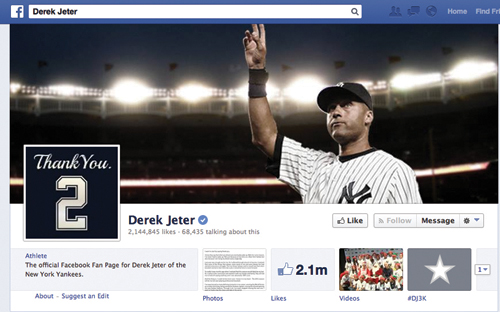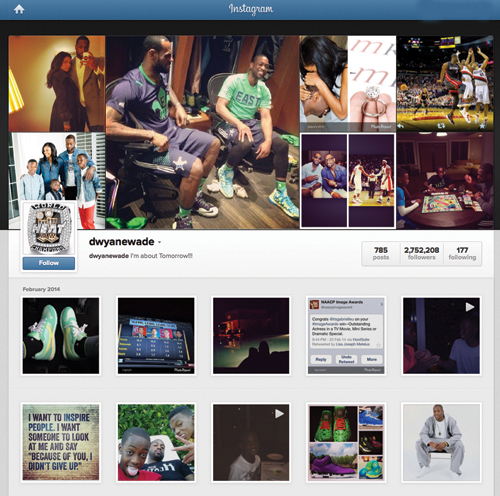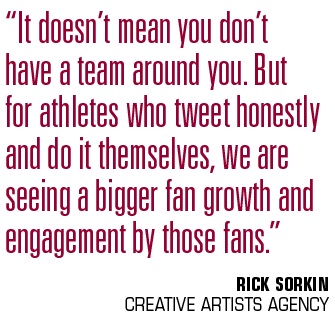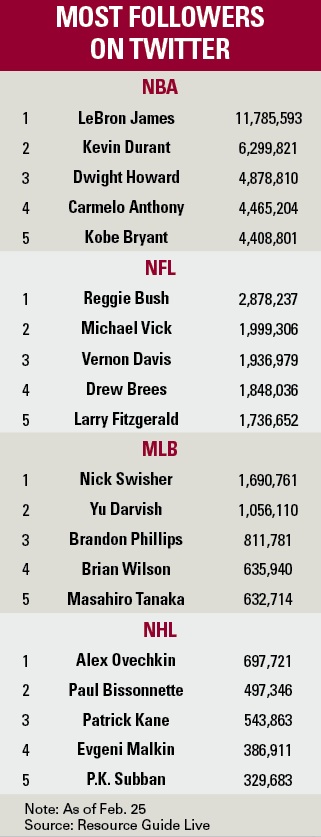About five years ago, when Twitter was just starting to get a mainstream following, athletes and celebrities would hire social media gurus to “tweet” for them or post for them on other social media platforms. Social media experts now say the days of celebrities hiring someone to run their social media may be numbered.
There are many reasons for this trend, including that athletes are just more comfortable using social media themselves.
 |
Derek Jeter took to Facebook to announce plans to retire after the 2014 baseball season.
|
“Some of the biggest trends we’re seeing with athletes on Facebook and Instagram include breaking news, sharing behind-the-scenes content, and directly engaging with fans,” said Brandon Gayle, who manages athlete partnerships for Facebook and Instagram.
For example, Derek Jeter and David Beckham used Facebook to announce their retirement plans. Dwyane Wade turned to Instagram to announce his engagement to Gabrielle Union.
“I think authenticity is always going to win,” said Rick Sorkin, business development executive at Creative Artists Agency, who advises athletes, entertainers and other celebrities on social media strategy. “It doesn’t mean you don’t have a team around you. But for athletes who tweet honestly and do it themselves, we are seeing a bigger fan growth and engagement by those fans.”
Social and digital agencies are still giving celebrities and athletes advice, but that advice includes having the talent speak in their own voice.
Ryan Ford, vice president of Cashmere Agency, a digital and social media agency that counts as clients current and
former NBA, MLB and NFL players, as well as entertainers including Snoop Dogg, said consumers are more savvy and can tell when a post is manufactured. Consumers will say, “Oh, this is a tweet that is clearly trying to promote something or show the best version of this person,” Ford said.
Brands are looking for authenticity, as well, said Darin David, who recently founded brand consulting firm Steel Curtain after working as an account director for The Marketing Arm, which advises brands on sports endorsements.
“Brands are more willing now to give up control over how the message is presented to appear more authentic,” David said. “On social media, if you sound like an ad, your message can be quickly rejected and there will be backlash.”
Sorkin and others say the vast majority of athletes and celebrities are on at least one social media platform. Both the number of platforms they occupy, and the engagement between talent and the general population, is growing, he said.
 |
| Dwyane Wade is a regular on Instagram, where he shared his engagement announcement. |
On Facebook, as of July 2013, there were more than 1.6 billion total connections between people using the social media platform and sports entities, including player, team and league pages, according to Facebook. Of that number, more than half of the connections, 883 million, were people connecting to athlete pages.
At the end of 2013, about 2,225 NFL players were on Twitter, an increase of about 30 percent over 2012; about 588 NBA players were on Twitter, an increase of 28 percent over 2012; 778 MLB players, an increase of about 41 percent from the year before; and 457 NHL players, an increase of 74 percent. Those numbers, reported by Twitter, reflect both current and recently retired NFL, NBA, MLB and NHL players.
Twitter doesn’t expect the percentages to continue to climb at those rates, as most players in the leagues are now on the platform.
“At this point, it is no longer, ‘Should I be on Twitter?’ It’s ‘How am I going to use Twitter to engage with my fan base?’” Twitter spokesman Brian Poliakoff said.
Jaymee Messler, senior vice president of marketing for Excel Sports Management, which represents NBA and MLB players as well as golfers, said athletes’ use of social media has been an evolution.
“It is through social media that for the first time they have been able to communicate directly with their fans,” Messler said. “Obviously Twitter was first to engage and excite them, and some athletes continue to tweet, while others have taken more to Instagram.”
Endorsement deals for athletes now include a social media component, but figuring out how to do that and not
sound fake is also an evolution and something that brands and athlete representatives are working on, Messler said.
“What is appealing to a company is an athlete’s social media following, but when an athlete starts promoting a lot of products through their Twitter feed, fans start to turn off,” she said.
Both Messler and Lowell Taub, global head of endorsements for CAA Sports, noted that a number of athletes are increasingly using Instagram to get their messages out versus Twitter.
While Instagram is about pictures, Twitter is about words, which means it has more potential to get athletes into trouble.
“It is much safer for the athlete to give their fans a glimpse of their life via photography and not be in the moment sharing an opinion on this or that that can get them in hot water and get all that backlash,” Taub said. “That is far less likely to happen with a photo. And photos are so loved by the fans.”
Some of the newer platforms that athletes are using involve video. Instagram has a video application and Twitter has one called Vine. Sorkin believes athletes will start to gravitate to those platforms as well.
“I happen to think that speaks very well to their audience,” Sorkin said of Vine. “It’s difficult to be poignant, or witty or relevant in six seconds, but those who pull that off I think have a really good shot of being, quote, unquote, ‘the biggest athlete on Vine.’”
Ford doesn’t think athletes and other celebrities are necessarily moving from one platform to another, but are now using multiple social media platforms and using them for different messages. He noted that Kobe Bryant recently used Twitter to express his displeasure with the Lakers for trading teammate Steve Blake to the Golden State Warriors. “Not cool with @SteveBlake5 being gone AT ALL One of my closest teammates and psycho competitor GS picked up gem #smartmove,” Bryant tweeted.
Ford said Bryant could not get that same message across on Instagram. “How are you going to do that on Instagram?” he said. “Are you going to have a picture with a sad face?”
Although athletes are not using social media experts to tweet or post for them as much, they are still asking for advice about how to use the different platforms as social media evolves. They look to experts not for individual posts or tweets as much as for an overall social media strategy.
Sorkin said his advice depends on a number of factors, including how much time the users have, how much interest they have, and how much support they have to be on multiple social media platforms. If a celebrity’s time is limited, Sorkin said his recommendation is to try out one platform until he or she gets comfortable.
“One of the common pitfalls people make is, [they say] ‘OK, I want to be on Twitter, so I will do that on Monday. I want to be on Instagram and I will do that on Tuesday,’” Sorkin said. “But it’s kind of like a garden. If you water a flower, if you only water it once, it is probably not going to be around that long.”







